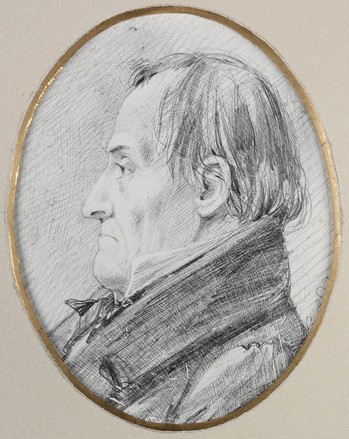William Cox (1764 – 1867) was born in Dorset and joined the New South Wales Corps as lieutenant in 1797. A year later he was commissioned paymaster of the corps, and in 1799 he and his wife Rebecca, along with their four (of six) sons sailed to New South Wales. When they arrived, in 1800, Cox acquired a large amount of land and stock. He purchased Brush Farm at Eastwood as well as a large flock of sheep from John Macarthur and soon acquired the successful fruit farm, Canterbury, adjoining his property.
Within in three years, Cox was in financial trouble. His desire to quickly build up a large agricultural empire combined with his position as paymaster of the corps led to accusations of illegally using Army credit to fund his purchases. Cox was suspended from his office as paymaster in the corps in 1803, and managed to pay back his creditors by selling off his assets. Despite his efforts to restore his financial situation, Cox was sent back to England in 1807 to face disciplinary charges for fraud. He never went to trial, but resigned from the army and returned to Australia to his new property on the Hawkesbury.
In 1810, Cox was made magistrate of the Hawkesbury district by Governor Lachlan Macquarie. As a civilian, he was a respected member of the community with a reputation for fairness and generosity towards his convict employees. He was given oversight of many building projects in the Windsor area, including the court house, designed by convict architect, Francis Greenway. Because of his reputation for fair dealings with convict workers, Macquarie put him in charge of the building of the road across the Blue Mountains from Emu Plains to Bathurst.
Cox chose his convict working party based on the reputations of the men for hard work. He insisted that they be rewarded at the end of the project with their freedom. William also appears to have used morale-raising tactics which he learnt as an officer in the army, such as making sure the men ate before he did. He was also careful not to refer to the men as ‘convicts’, but used terms such as ‘quarrymen’ or ‘carpenters’. Freedom itself was an excellent motivator and the men worked hard, finishing 163 kilometres of road in just six months.
Governor Macquarie was very impressed with Cox’s road and the speed and manner with which it was completed. He wrote, ‘[The road] thus constructed by Mr Cox, does him and the Party, who worked under his direction, Infinite Credit’ (Macquarie to Earl Bathurst, Secretary of State for the Colonies, 24 June 1815)
Cox was rewarded with £300 and a large grant of land in the newly opened plains west of the Mountains. He was also appointed Commandant at the new outpost, Bathurst, with a salary of £200.



 Back to list
Back to list